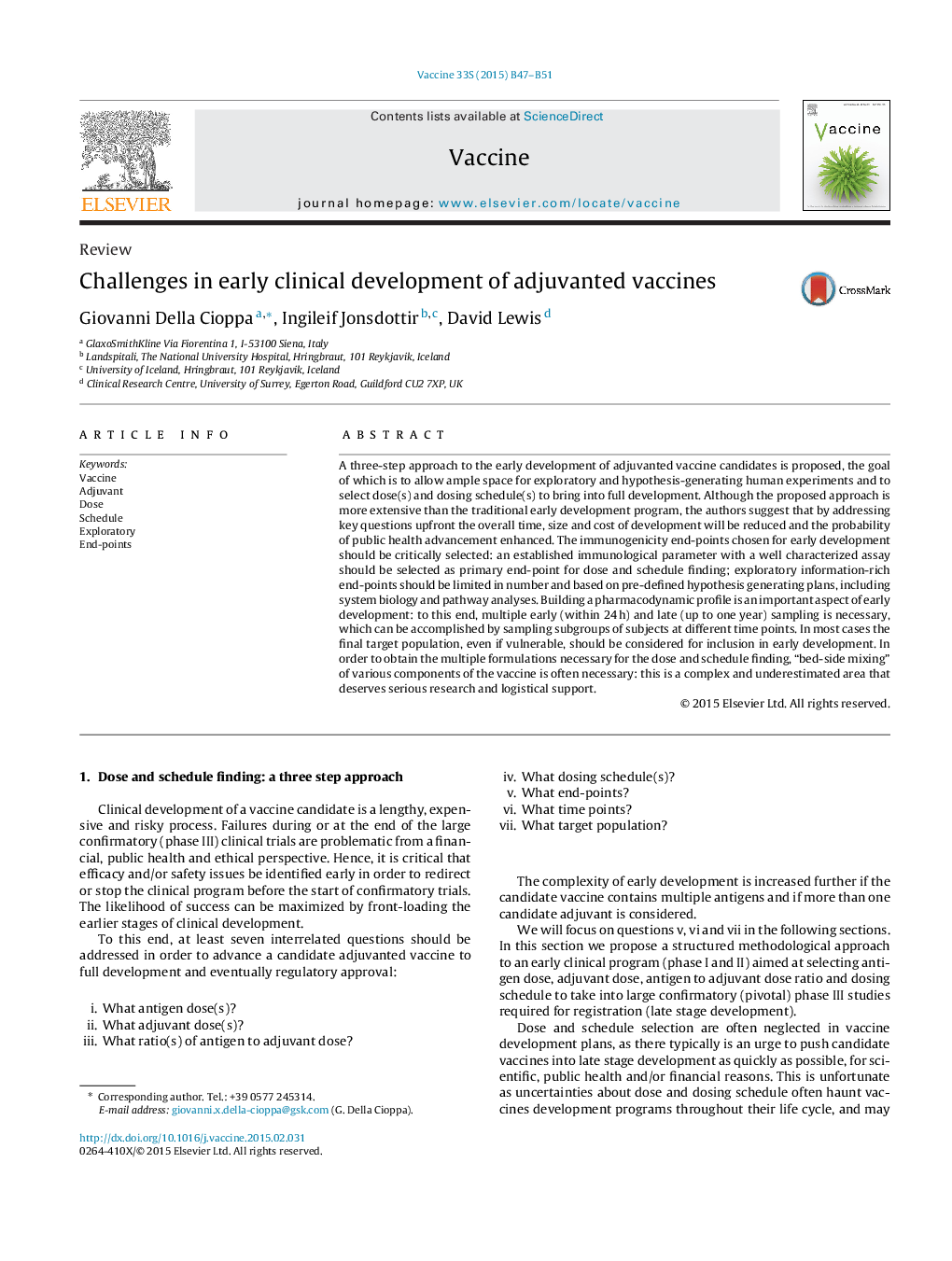| Article ID | Journal | Published Year | Pages | File Type |
|---|---|---|---|---|
| 10965307 | Vaccine | 2015 | 5 Pages |
Abstract
A three-step approach to the early development of adjuvanted vaccine candidates is proposed, the goal of which is to allow ample space for exploratory and hypothesis-generating human experiments and to select dose(s) and dosing schedule(s) to bring into full development. Although the proposed approach is more extensive than the traditional early development program, the authors suggest that by addressing key questions upfront the overall time, size and cost of development will be reduced and the probability of public health advancement enhanced. The immunogenicity end-points chosen for early development should be critically selected: an established immunological parameter with a well characterized assay should be selected as primary end-point for dose and schedule finding; exploratory information-rich end-points should be limited in number and based on pre-defined hypothesis generating plans, including system biology and pathway analyses. Building a pharmacodynamic profile is an important aspect of early development: to this end, multiple early (within 24Â h) and late (up to one year) sampling is necessary, which can be accomplished by sampling subgroups of subjects at different time points. In most cases the final target population, even if vulnerable, should be considered for inclusion in early development. In order to obtain the multiple formulations necessary for the dose and schedule finding, “bed-side mixing” of various components of the vaccine is often necessary: this is a complex and underestimated area that deserves serious research and logistical support.
Related Topics
Life Sciences
Immunology and Microbiology
Immunology
Authors
Giovanni Della Cioppa, Ingileif Jonsdottir, David Lewis,
